Three
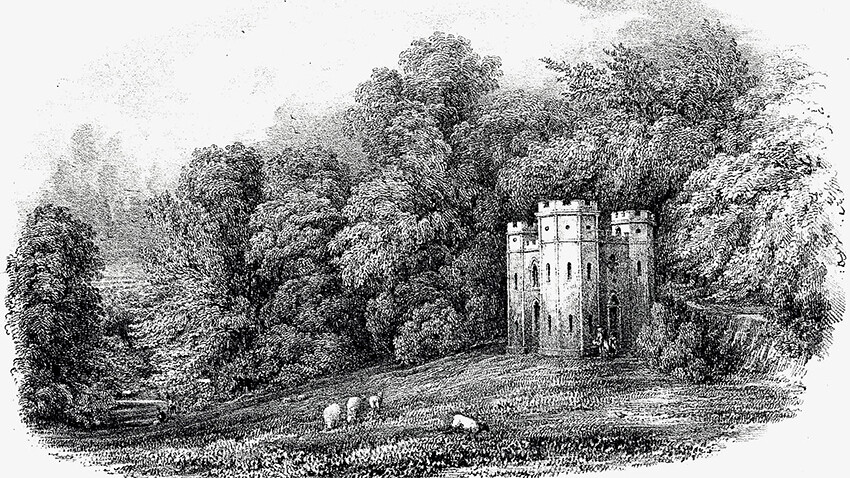
Three
 On the top floor of the Castle is a room full of work-in-progress – furniture, propped up mirrors and paintings that are all not quite “placed”. One of these items is a three-sided table - I pop in every so often to look at it, bending down to examine the carvings and running my fingers slowly around the edges. It is in some ways a curio but looking at its unique shape, it always reminds me of the importance of the number three.
On the top floor of the Castle is a room full of work-in-progress – furniture, propped up mirrors and paintings that are all not quite “placed”. One of these items is a three-sided table - I pop in every so often to look at it, bending down to examine the carvings and running my fingers slowly around the edges. It is in some ways a curio but looking at its unique shape, it always reminds me of the importance of the number three.
 There are also larger triangular structures here too: Geordie's ancestor, Robert Herbert, built a 3 sided folly three hundred years ago (the engraving in the top photo).
We al begin to learn to count by using our fingers and toes, hopefully progressing fairly quickly beyond the number three. Thereafter, maths lessons teach us arithmetic and beyond that to define, order and experiment with numbers.
“To the uneducated, an A is just three sticks” (AA Milne) but in fact 3 is a magic number, a divine number expressing things coming full circle and the list of its properties is extraordinary.
To begin with the number 3 is an integer, a natural number which can make up a set. Perhaps originally written with three parallel strokes, it then acquired curves and a rotation to create the shape familiar to most of us today.
There are also larger triangular structures here too: Geordie's ancestor, Robert Herbert, built a 3 sided folly three hundred years ago (the engraving in the top photo).
We al begin to learn to count by using our fingers and toes, hopefully progressing fairly quickly beyond the number three. Thereafter, maths lessons teach us arithmetic and beyond that to define, order and experiment with numbers.
“To the uneducated, an A is just three sticks” (AA Milne) but in fact 3 is a magic number, a divine number expressing things coming full circle and the list of its properties is extraordinary.
To begin with the number 3 is an integer, a natural number which can make up a set. Perhaps originally written with three parallel strokes, it then acquired curves and a rotation to create the shape familiar to most of us today.
 Three is also a prime number and the only prime number before a square number. It is the second Fibonacci prime, (each number is the sum of the two preceding ones) and the first of five known Fermat Primes so there is a long list of its unique qualities.
Triangles have three sides and according to Pythagoras and the Pythagorean school, the number 3 is the noblest of all digits as it is the only number to equal the sum of all the terms below it and the only number whose sum with those below equals the product of them and itself. In addition, three is the number of non-collinear points needed to determine a plane, a circle and a parabola. We live in a three-dimensional world where there are three primary colours.
Three is also a prime number and the only prime number before a square number. It is the second Fibonacci prime, (each number is the sum of the two preceding ones) and the first of five known Fermat Primes so there is a long list of its unique qualities.
Triangles have three sides and according to Pythagoras and the Pythagorean school, the number 3 is the noblest of all digits as it is the only number to equal the sum of all the terms below it and the only number whose sum with those below equals the product of them and itself. In addition, three is the number of non-collinear points needed to determine a plane, a circle and a parabola. We live in a three-dimensional world where there are three primary colours.
 The number three is also in our everyday life and language. Good things come in three’s but on the other hand so do bad things! We have three meals a day, you can wear a three piece suit, there are three stumps on a cricket wicket, you might make it a hat trick, enter a three legged race, remember there are three feet in a yard before saying "3,2,1 Go!", before also admitting that you are three sheets to the wind.
However, at this time of year, I and other Christians contemplate Easter and the three main days of celebration from Good Friday to Easter Monday. St Peter denied Jesus three times but affirmed his faith in him three times as well. During the “agony in the garden”, Christ asked three times for the cup to be taken from him and rose from the dead on the third day after his death.
The number three is also in our everyday life and language. Good things come in three’s but on the other hand so do bad things! We have three meals a day, you can wear a three piece suit, there are three stumps on a cricket wicket, you might make it a hat trick, enter a three legged race, remember there are three feet in a yard before saying "3,2,1 Go!", before also admitting that you are three sheets to the wind.
However, at this time of year, I and other Christians contemplate Easter and the three main days of celebration from Good Friday to Easter Monday. St Peter denied Jesus three times but affirmed his faith in him three times as well. During the “agony in the garden”, Christ asked three times for the cup to be taken from him and rose from the dead on the third day after his death.
 At the centre of Christianity is the concept of the trinity, the doctrine which states that Christ performs the functions of prophet, priest and king and explains the three distinct divine persona - God the Father, God the son and God the Holy Spirit, a story which of course began with a birth heralded by the three Magi offering Christ the baby three gifts.
Easter Monday is both the day which marks the resurrection and a time to celebrate the rebirth of Spring. “Eostre”, from which the word Easter stems, is a Saxon celebration in northern climes whilst the traditions of “Paschal” (from the Greek and Aramaic ‘feast of Passover) leads the traditions and beliefs in many southern parts of the world. In every case the date of Easter is computed from the solar year and the Moon phase and so changes each year. In 725, Bede succinctly wrote, "The Sunday following the full Moon which falls on or after the equinox will give the lawful Easter.” These days ecclesiastical rules ensure that it has to fall after March 21st and take place on the first Sunday after the Paschal full moon. Thus, this year Easter is very early whilst next year it is very late – towards the end of April.
At the centre of Christianity is the concept of the trinity, the doctrine which states that Christ performs the functions of prophet, priest and king and explains the three distinct divine persona - God the Father, God the son and God the Holy Spirit, a story which of course began with a birth heralded by the three Magi offering Christ the baby three gifts.
Easter Monday is both the day which marks the resurrection and a time to celebrate the rebirth of Spring. “Eostre”, from which the word Easter stems, is a Saxon celebration in northern climes whilst the traditions of “Paschal” (from the Greek and Aramaic ‘feast of Passover) leads the traditions and beliefs in many southern parts of the world. In every case the date of Easter is computed from the solar year and the Moon phase and so changes each year. In 725, Bede succinctly wrote, "The Sunday following the full Moon which falls on or after the equinox will give the lawful Easter.” These days ecclesiastical rules ensure that it has to fall after March 21st and take place on the first Sunday after the Paschal full moon. Thus, this year Easter is very early whilst next year it is very late – towards the end of April. Here at Highclere, the Spring weather has been "a little damp", not all the daffodils have bloomed and the tulips are still tightly folded. The blossom is just coming out but most of the lambs are still waiting to be born. As a result we have had our own personal 3 Easter challenges – muddy car parking for our visitors and guests, cold wet weather for lambing and difficult farming conditions.
Here at Highclere, the Spring weather has been "a little damp", not all the daffodils have bloomed and the tulips are still tightly folded. The blossom is just coming out but most of the lambs are still waiting to be born. As a result we have had our own personal 3 Easter challenges – muddy car parking for our visitors and guests, cold wet weather for lambing and difficult farming conditions.
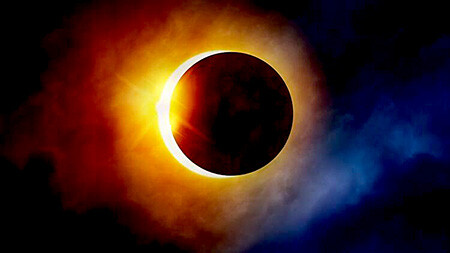
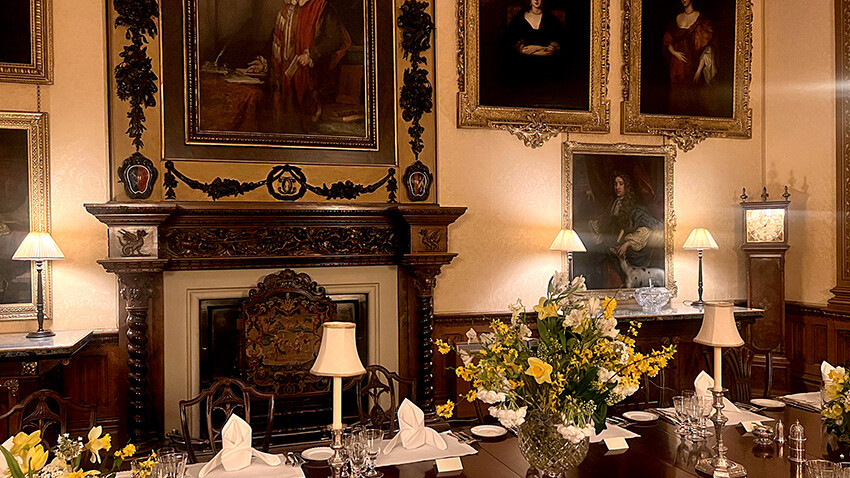
- Christmas
- Community
- Dogs & Horses
- Egypt & Tutankhamun
- Entertaining
- Farm
- Filming
- Gardens
- History & Heritage
- Daily Life
- Royalty
- Cooking
- Interiors
- Heroes
- Architecture
- Cars
- Conservation
- Downton Abbey
- Events
- Gardens & Landscape
- Highclere Castle Gin
- History
- Planes
- Restoration
- Stories & Books
- Uncategorized
- Visitors
- Wildlife
49 Comments
Fascinating expansion of Maths over furniture, architecture, scripture and life. Thanks.
Thank you !
Lady Carnarvon,
I’m so glad you tuned quickly from math of threes to the divinity of threes! I understand the latter so much more than the former! May Spring come soon to Highclere - sunshine, new life, and many visitors!
Thanks again for your very interesting column! Happy Sprintime!
Martha G.
As a mathematician, I enjoyed your ode on the meanings of three! I look forward to your blog every week and smile as I think of meeting you in person at Highclere. That you took the time to connect with two strangers visiting your home was very special to us. I still mention Highclere gin to every bar and restaurant in Atlanta — we must keep our status up as a best-seller city. Have a lovely Spring, dear Lady Carnarvon!
Always interesting, as usual. On this Easter weekend, the way you ended your thoughts was magnificent. “He is not here, He is risen!” Happy Easter, Lady and Lord Carnarvon!
Good article. Happy Easter Lady Carnarvon.
Lady Carnarvon.........you fashion the simplest things into a fascinating piece. The table pictured is exquisite. The sheep and lambs take me back 65 years.I hope you and Lord Carnarvon had a peaceful and wonderful Easter. Best wishes to you, both.
Thank you another great and interesting read,
You are truly a Renaissance woman! I so enjoy your postings blending art, history, science, architecture, farming, gardening, even maths in this one. Always informative and a joy to read. Happy Easter!
You are very kind - thank you
I find the table fascinating..
Thank you - Happy Easter
Happy Easter and thank you for sharing
A most interesting post ! Thanks for explaining why the date changes each year for Easter. I never really understood that. My son is an Easter Monday baby. The year he was born, Easter was in late April. Our weather here in Maryland is damp and rainy today. And a bit muddy. I hope you and your family had a wonderful and blessed Easter.
Dear Lady Carnarvon,
Thanku for another wonderful blog, I have always considered the number Three an extraordinary & lucky number, & it has always been lucky for me
I wish you and everyone at Highclere a very Happy Easter & a warm, dry & successful Spring, love Caroline xxx
Lady Canarvon,
I think we’ve all been mystified by the 3rd floor so thank you for shedding some light on this rarely seen area! Perhaps in the future you will develop it into a more usable space for future projects.
There are already quite a few beautiful rooms there - and some are used - I have been sharing then with Friends of Highclere and in brief on instagram
Lady Carnarvon,
I was not aware of "Easter Monday" until this year.
Reflecting on the importance of Resurrection Sunday is a good thing.
Happy Spring to you and yours at Highclere!
Thank you for another brilliant piece. How I would love to explore that room! As to the number three, I remember reading some years ago, by your wonderful Laurens Van Der Post, that he observed chimpanzees teachings their young to count to three. Anything more than that was 'more than three".
When we visited Highclere last summer, we fell even more in love with your area! I look forward to every Monday reading your newest article-you never disappoint. The number 3 has fascinating qualities, thank you for bringing our Spiritual connection into todays!
Have a blessed day.
Debbie B (from across the Pond)
THANK YOU , GREAT READ VERY INTERESTING .
Hello, always a pleasure to read you and look at beautiful photos, Happy Easter to your whole team Bonjour, toujours un plaisir de vous lire et de regarder de magnifiques photos, Joyeuse Pâque a toute votre équipe.
Merci
That is a great quote!
I always learn something from your blogs. Thank you for that!
A very amazing post with much to absorb! This is Monday in the States, so I hope you had a blessed Resurrection Sunday with lambs and white tulips!
Hello Lady Carnarvon.
THREE GOOD THINGS ABOUT DOWNTON ABBEY.
The location.
The music.
Lady Mary's ankles.
Hope you all had a good Easter as the weather was better than expected.
Carry on egg hunting!
regards
Happy Easter. Christ is risen. He is risen indeed. Thank you for a study in three.
Avril Ann
Outstanding blog! My other favorite 3 (in addition to your wonderful three's) are my triplet sisters who are 3 years younger than I. With 2 older brothers, we are 3 and 3. Hear no evil, see no evil, speak no evil, another fine example of 3. The 3 Muskateers and I could go on and on and on. Three is truly a special number. Now we have experienced the first 3 months of the year and are ready to enjoy the next 3.
How lovely ! Triplets
The weather is challenging
Actually we do have both !!
Thank you
Dear Lady Carnarvon,
Happy Easter. We still have snow on the ground. It will be gone soon enough and I will start planting wildflower seeds. I hope to see many bees. The information about the number three and Easter is very interesting. Thank you. Take care.
Susan
I love your posts and love historical homes. I am wondering if the 3rd floor and the towers were used for anything else in past history. I have also been curious as to location of the nursery.
Hello Nancy
There were some bedrooms up there, Maids' rooms and the nursery.
A most Happy Easter season for you and all at Highclere. This is such an interesting blog , and with the number three, thank you for the interesting facts! Sorry the car parks are muddy and the tulips are yet to bloom, Easter for you came so very early this year, and will be so very late for us in Greece ( May 5th ). We are still in the 40-days Fasting, along with Jewish Passover and Ramadan this month of April. It is a "moveable feast" as Hemingway says. But we will celebrate on the same Easter Sunday, April 20, in 2025, and hopefully Spring sunshine will abound everywhere!
Thank You for sharing about “three”! How interesting and I have seen the picture of Christ before, my mother told the story!
I have always loved the story how a “three twisted wire is stronger”!
Best Regards from Sweden were we have a backlash of snow today!:)
Helena Busch-Christensen
Enjoyed the study of 3 today! That is an interesting face carved into the corner of the three-sided table!
I always enjoy your delightful and insightful messages and this week I learned how little thought I'd ever given to the fascinating number three - one of those "whatever would we do without it?" moments. So silly and so true!
My mother taught me the Easter formula of:
The first Sunday
After the first full moon
After the equinox
years ago. I'm usually lazy enough to just look at the calendar instead.
With the work you have to maintain and make your property available to your guests, even if it helps to draw guests to support that work, your weekly blogs are a lovely, "above and beyond " gift to those of us who will probably never have the opportunity to experience it in person.
It is green, blooming and drizzly here in Kansas now, but soon it will get hot and humid and gradually the corn and bean fields will turn brown. The green here is never as lush as it is there or in Eastern US - something I miss. Thank you, dear lady, for a weekly note that feeds and refreshes us.
How very kind
I enjoyed reading your blog on the significance of three in history. It’s rather uncanny how things happen in threes, and as you mentioned, not always good. The three-sided desk is beautiful. It would make an empty corner interesting.
Lady Carnarvon,
Thank you for the blog and the significance of three. I really enjoyed all references and pictures of the sheep as we saw them firsthand. We are from the states and visited Highclere on Easter Sunday. I would have loved to see the three sided desk and a much more of Highclere's mysteries. I feel like there is so much more that should be shared!
So informative! I was lucky to visit HCC in April about 6 years ago . I can still remember the multitudes of baby lambs covering the fields. It was so charming.
I have not read your blog in such a long time, and I don't really know why! But it is lovely to see it again and this one was especially fascinating.
Thank you
I sometimes tell people privately how 'mathematics' is the language of the Most-High G-D (symbolically speaking)! 2 tha' East!
Hannibal Abdullah-El (A.K.A. 3 x 3)
Dear Lady Carnarvon:
Thank you for this blog.
What an interesting read.
Until next time.
Perpetua Crawford

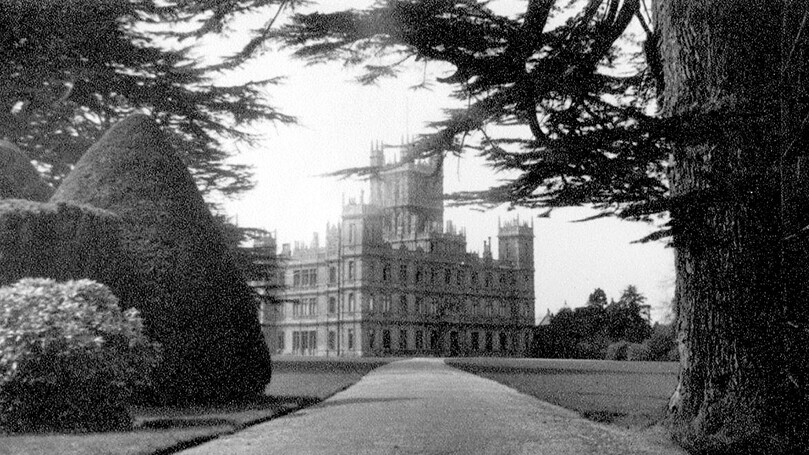
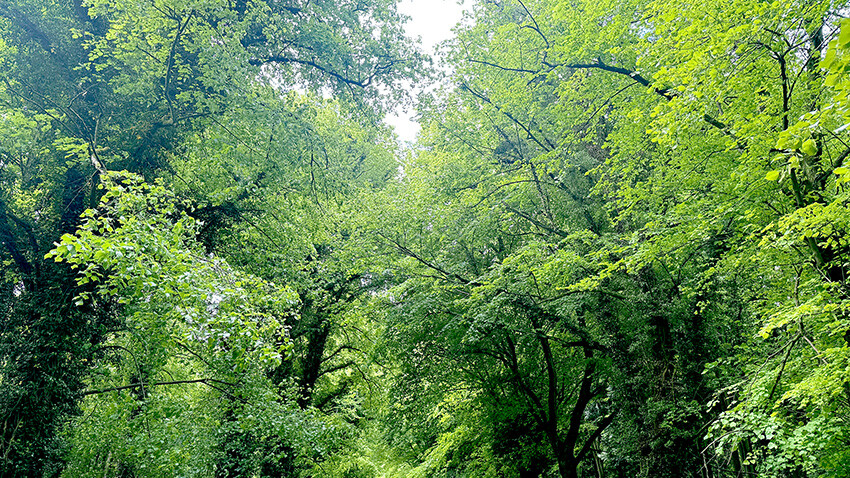
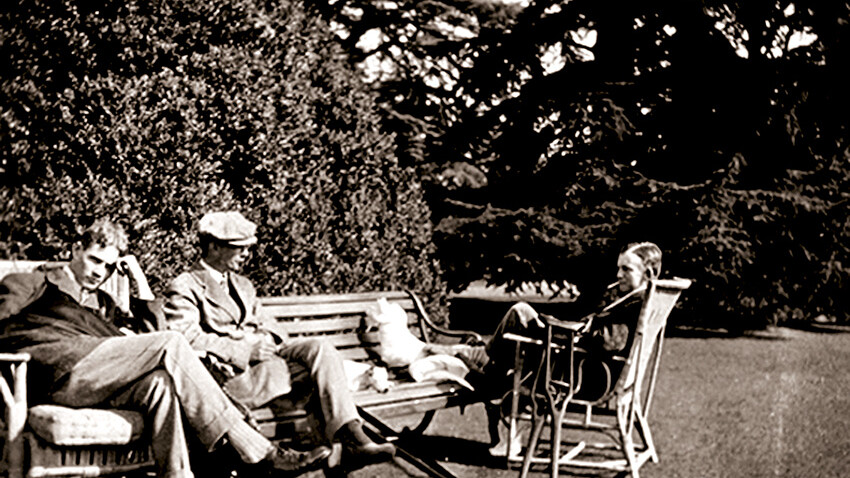
Lovely the picture of three and did you and lord Carnarvon have a wonderful weekend and lam a fan of Downton Abbey and lovely highcelere castle thank you for the email you send